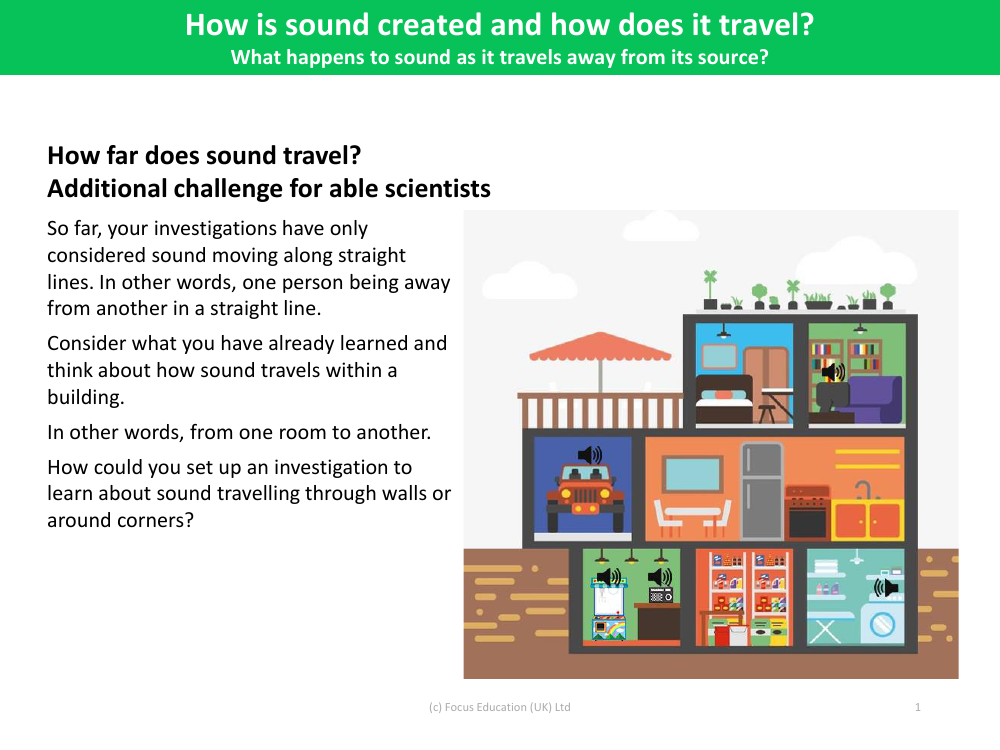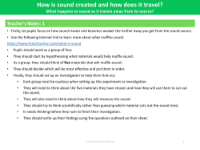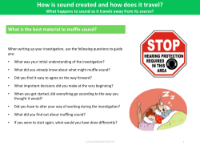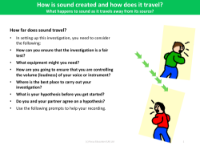How far does sound travel? - Additional Challenge

Science Resource Description
Exploring the journey of sound beyond straight lines presents an intriguing challenge for budding scientists. When considering how sound travels within a building, from one room to another, it's important to understand that sound behaves differently when it encounters obstacles such as walls or when it must navigate around corners. To investigate sound transmission through various mediums, one could design an experiment where a noise is generated in one room and its audibility is tested in adjacent rooms or around bends in a corridor. This would involve measuring the volume or clarity of the sound at different distances and through different materials to determine how effectively sound waves can penetrate or diffract.
Sound is created when an object vibrates, causing the air around it to move in waves. As these sound waves travel, they spread out and their intensity decreases, which is why sounds become fainter the further they are from their source. The nature of the material the sound travels through—be it air, a wall, or around a corner—also affects how the sound is transmitted. Some materials absorb sound, while others reflect or transmit it, influencing how far and clearly a sound can travel. By setting up controlled experiments to observe these phenomena, one can gain a deeper understanding of the behaviour of sound in different environments. This knowledge is not only fascinating but also practical, with applications in fields such as acoustics, architecture, and engineering.






